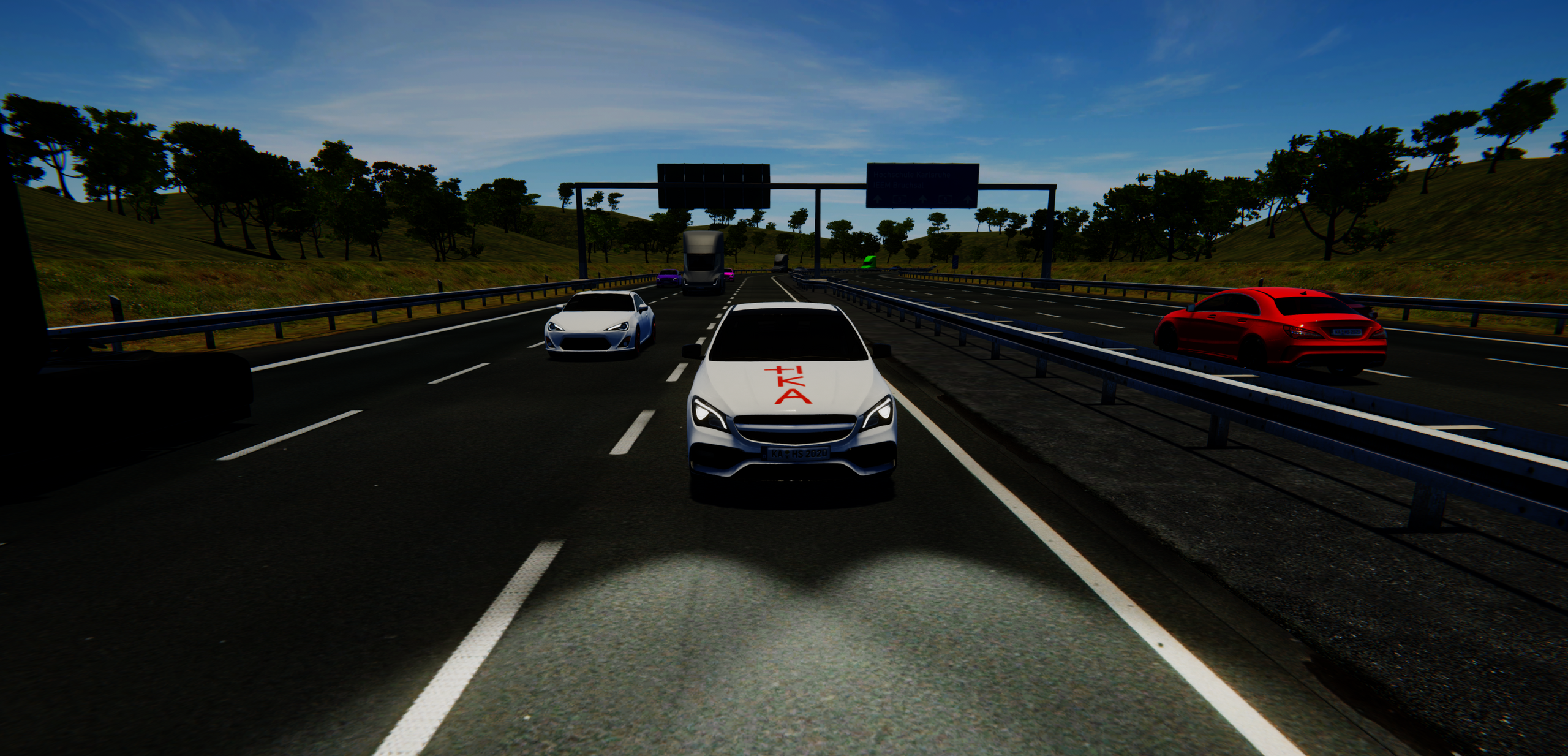
ADAS-Sim
Advanced Driver Assistance Systems (ADAS) have already made driving more comfortable today, for example by automatically maintaining a speed or keeping the lane. In particular, these systems offer the potential to contribute to the completion of automated driving and thus significantly shape the mobility of the future. Virtual and model-based approaches are indispensable for developing and testing systems, which actively intervene in control systems of the vehicle. In this way, both individual driver assistance systems and the combination of several systems can be developed in a virtual environment and can be tested directly afterwards, risk-free and intensively, for example as part of student projects or as a basic-testing before real vehicle testings. With the Unity 3D game engine, it is possible to quickly and easily set up virtual vehicles and the associated environment for testing and developing in the context of entire vehicles.
IEEM Develops a Virtual Test Environment to Develop and Design Autonomous Vehicles
In this project, a simulation environment, which set up within student projects, makes it possible to represent vehicle functions in the physical context of the entire vehicle and the associated environment. The setup is done completely virtual with the game engine Unity 3D, in which both the physical implementation and visualization of vehicle functions as well as a simulation of a realistic environment take place. Among other things, this makes it possible to implement and safely test advanced driver assistance systems, such as a lane departure warning system or speed and distance control.
Sim Implementation
The simulation environment in Unity is configured modularly and enables the individual implementation of specific driving scenarios. Thus, currrently a highway route is only used as a scenario for the simulation of the lane departure warning system and the adaptive speed control. It is possible to extend the scenario as required or to set up a new scenario for testing the vehicle and assistance systems. The associated simulation of external traffic is carried out with the tool Sumo (Simulation of Urban MObility) and supports the modular structure of the simulation environment. Thus, the current highway scenario only includes car traffic, while additional bicycle and pedestrian traffic can be added for an urban scenario.
Learn more about our virtual simulations
External content
To use this content (Source: www.xyz.de), please click to Accept. We would like to point out that by accepting this iframes data to third parties transmitted or cookies could be stored.
You can find further information in our Privacy policy.
Project video, source: Yannick Rauch
External content
To use this content (Source: www.xyz.de), please click to Accept. We would like to point out that by accepting this iframes data to third parties transmitted or cookies could be stored.
You can find further information in our Privacy policy.
Development of a radar sensor in Unity 3D & ROS for the detection and recognition of other road users, source: Adrian Imme
ADAS implementation
The existing simulation environment offers the possibility of developing and immediate testing advanced driver assistance systems under realistic conditions. In a first step, there are a camera-based lane departure warning system and a speed control system available. Based on this, a system for adaptive speed and distance control is being implemented. For the implementation of functions, the ROS framework (Robot Operating System) is used, which is built in a Linux environment. On the one hand, this allows individual functions to interact with each other, and on the other hand, it enables modular development of the individual functions. Communication between the ROS framework and the vehicle in Unity takes place via a websocket. For this purpose, there is a corresponding ROS client in Unity that receives the control signals and simultaneously transmits sensor data, such as the camera image.
Objective
The virtual simulation environment is intended to enable students and researchers at IEEM the implementation and, above all, visualization of developed functions or partial models of a vehicle in a realistic environment. In particular, this will enable the development and testing of safety-critical systems, such as driver assistance systems with active intervention in the vehicle's longitudinal and lateral guidance. These initial tests can serve as basis for tests on real vehicles. The current status is to be expanded in the course of further projects, so that in the medium term the functions for an autonomous highway pilot will exist. In addition, the connection of vehicle network models is planned to be done, for example in the context of security research, for holistically testing these network models in the context of the entire vehicle.
Key data
Karlsruhe
Institute of Energy Efficient Mobility (IEEM)
Moltkestr. 30
76133 Karlsruhe
Post >
Institute of Energy Efficient Mobility (IEEM)
Postfach 2440
76012 Karlsruhe